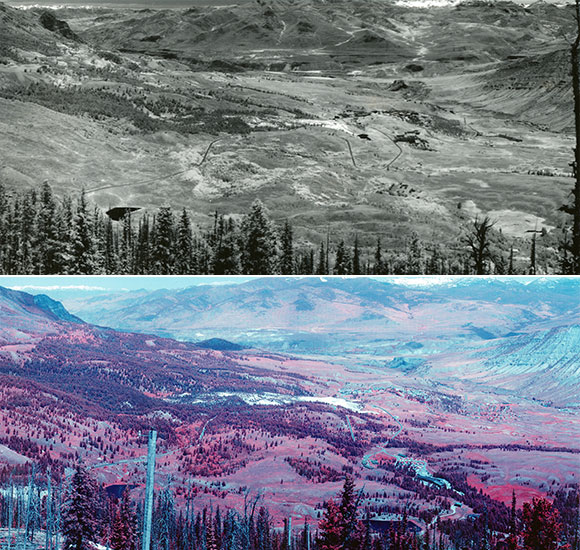There are Many uses for Panoramic Lookout Photographs
Assisting lookouts and park managers to accurately locate forest fires. It is a tribute to the skill of the individuals who initiated the work that produced these photographs that their product is still valuable today.
Identifying vegetation patterns. In every photograph, there are distinct patterns of vegetation. Disturbances, such as forest fires, change the vegetation patterns as trees die and new vegetation grows in its place.
Identifying landscape features. Many events occur over the course of time that may change a landscape, including human disturbance. Roads and structures are two examples that may be identifying features on a landscape.
Repeat photography. By taking an identical photograph, from the same point and in the same direction, after a period of years, change can be observed.
By working to explain what, why, how, and where we see or don’t see things, we can learn a great deal about the subjects of these photographs.
Comparing INFRARED and PANCHROMATIC film types. Most of the lookout locations contain pairs of photographs, using both infrared film and panchromatic film. Panchromatic film is a normal black-and-white film you can buy in the store; it’s what your grandparents or great grandparents used prior to the 1960s. Infrared (IR) film absorbs different wavelengths of energy than panchromatic film. On infrared film, healthy deciduous vegetation is typically very light or nearly white, while healthy coniferous vegetation reflects less IR radiation and appears in gray tones. Dead or vegetation near death appears black. On IR film, water is very dark and smooth in contrast with the surrounding land. Moist soils also appear in dark tones, while dry soils appear in lighter tones.
--------

Things to Notice While Studying Panoramic Photographs
-
Look for evidence of fire. Why do fire patterns appear the way they do?
-
Look for dead trees and for clues as to why they might have died. Answers may include beetle kill, fire, avalanche, or others.
-
Notice the patterns of live and dead trees, and patches of trees of different heights, types, or ages.
-
Notice the excellent air quality in many of the 1930s photographs. Even the most distant peaks can be seen. Visibility is often limited today due to various anthropogenic sources of pollution. Note: This effect is only applicable in the panchromatic photographs, as infrared film and filters remove atmospheric scattering effects that otherwise obscure distant peaks.
-
Compare the skyline with a topographic map of the park and identify the photo-point along with surrounding peaks.
-
Look for other changes in the landscape.
Material for this section credited to USGS Northern Rocky Mountain Science Center.
Part of a series of articles titled Panoramic Project Shows How National Parks Change Over Time.
Last updated: July 22, 2020
